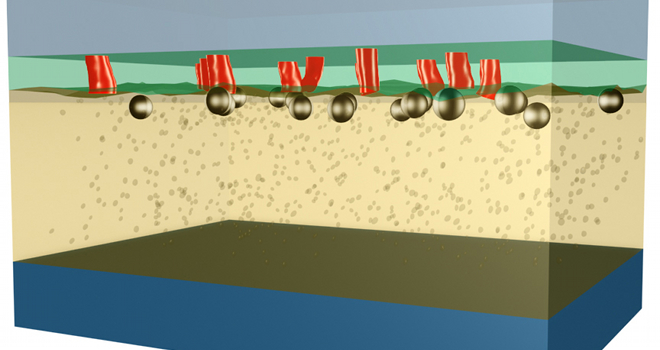For decades we’ve been using flash memory to store pictures. For nearly as long, we’ve been promised that this type of memory will someday be fast and durable enough to replace computer memory.
That day is in sight, thanks in part to a laboratory advance from Korean electronics giant Samsung.
The ubiquitous hard drive is relatively slow and power-hungry because it needs to spin to access information stored on the surface of the disk.
Computer memory chips are much faster, but aren’t permanent: they must reload information from the hard drive every time a computer starts up.
Non-volatile memory, including flash memory, combines elements of each: it’s much faster than a disk drive and storage is permanent. Replace a computer’s memory chips with nonvolatile memory and you’d have an energy-efficient computer that’s instantly ready to use — no waiting for it to boot up.
The Achilles’ heel of non-volatile memory, however, is it wears out relatively quickly. Flash memory bites the dust after a couple years of storing and erasing pictures and files. Any type of non-volatile memory would wear out much more quickly used as computer memory, which is constantly rewritten.
Samsung researchers have solved the durability problem. Their prototype resistive memory (RRAM) chip is durable enough to be rewritten a trillion times. Samsung’s RRAM lasts more than one million times as long as today’s best flash memory, which can be rewritten just a million times.
The Samsung chip is also just as fast as today’s DRAM computer memory chips (10 nanoseconds). This makes it speedy and durable enough to replace the memory chips that serve as a computer’s working memory. And because RRAM retains data, it could at the same time replace the disk drives.
The Samsung research is an important milestone in the development of memory chips, said semiconductor expert Victor Zhirnov of Semiconductor Research Corporation.The record endurance, high speed and low-power consumption “are very good results,” he said.
Samsung boosted RRAM reliability by confining the area where data is stored to an ultrathin layer. The Samsung researchers added an extra 10-nanometer layer of highly insulating material on top of a layer of medium insulating material.
Previous prototype RRAM chips had only one insulating layer. Because data is stored in the additional thin layer, it takes less power to write and erase each bit. The lower power means data can be stored and erased many times.
The Samsung RRAM is five or six years away from commercial use, said Myoung Jae Lee, the lead author of the Nature Materials paper on the research.
The researchers plan to fit more data on their prototype chip by scaling down the size of each memory cell, stacking the chips, and storing more than one bit of data per cell.
Samsung’s memory technology, along with recent developments from IBM and HP, suggest that we will eventually get those fast desk-top computers that are ready to go when you turn them on. We just have to wait a little longer.
Eric Smalley has written about technology for more than two decades. His freelance credits include Discover, Scientific American, Wired News and CNet. He edits Technology Research News.
Have a story idea or tip for Idea Lab? Please send thoughts to: Idealab@talkingpointsmemo.com.






